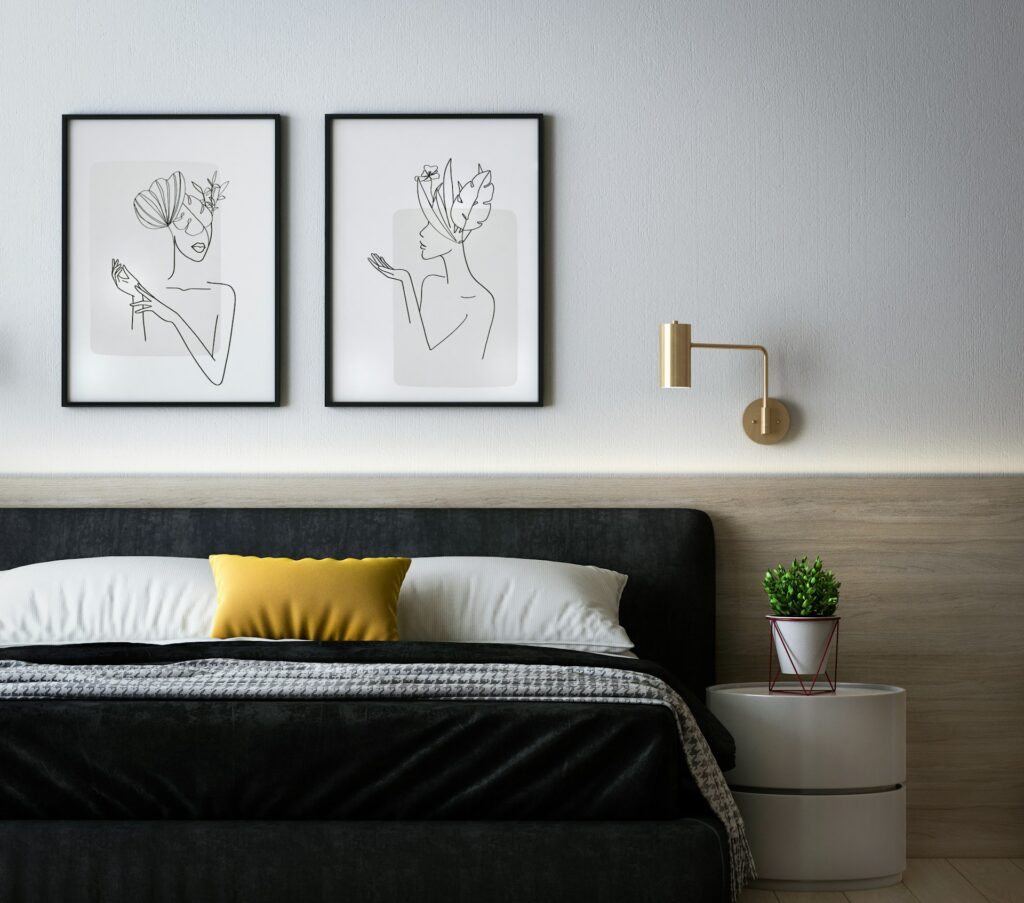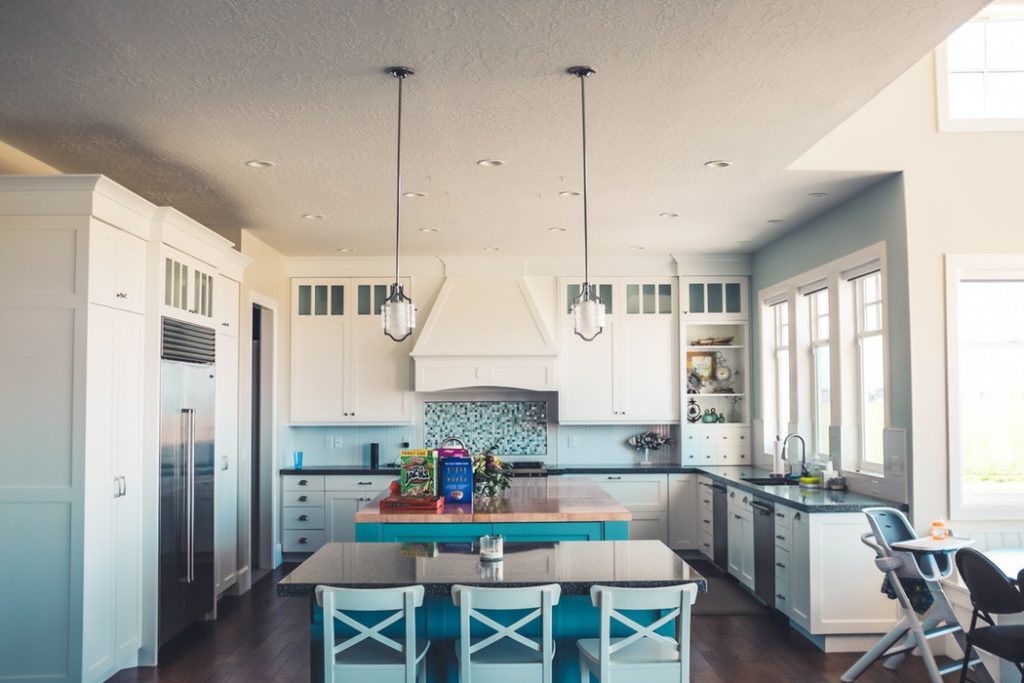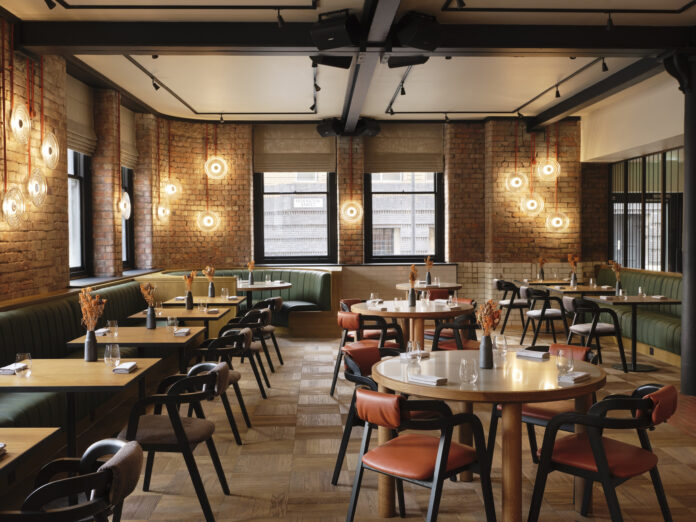A lack of space preventing you from swinging your cat? Elbows struggling for room? Shoulders rubbing uncomfortably? High density houses have become the new norm, especially in the big cities, and domestic real estate has suffered. As the population expands and greedy landlords do their best to squeeze us further, savvy homeowners and renters alike are looking for ways to maximise space in their properties.
With that in mind, here are 10 smart ways to create a sense of space and natural light at home.
Reach Up Or Dig Down
Well, you can start of by actually adding space. Converting your loft into a bedroom or creating a basement down below is the perfect solution to that lack of wiggle room within the home. A bedroom at the top of the house complete with stunning skylights sounds like a dream to us; channeling those penthouse vibes but in a less ostentatious way.
Alternatively, you could investigate the potential of digging down and fashioning a below ground level space. Check out our tips on brightening up a basement flat over here.

Choose Wall Art Wisely
The right wall art can dramatically enhance your perception of space whilst adding character to your home. Opt for pieces with light colours, airy subjects, or scenes with depth and perspective – think coastal landscapes, abstract watercolours, or photography featuring open skies. Large-scale pieces can create visual “windows” that trick the eye into seeing beyond the walls, whilst a well-curated gallery wall with light-coloured frames draws the eye upward, making ceilings appear higher.
When selecting artwork, consider exploring diverse styles and periods to find what truly complements your space. The WikiArt Store stands apart as it draws directly from one of the world’s largest online art encyclopedias, offering everything from Impressionist landscapes that capture natural light beautifully to minimalist modern pieces that maintain clean sightlines. Additionally, artwork with metallic accents or glass elements can help reflect light around the room, complementing your natural light sources without cluttering valuable surface space.
Opt For Open Floor Plans
The rumours are not true. Open plan living is not ‘a thing of the past’. The style does, in fact, endure as open floor plans not only create a sense of flow and connectivity between different areas of your home but also allow natural light to penetrate further into your living space. Consider removing non-load-bearing walls or replacing them with glass partitions to create a more open and spacious feel. Additionally, try to keep furniture arrangements minimal and avoid blocking windows or doorways.

Storage Solutions
If your place has mess and commotion at every corner, then your house is going to feel small. Claustrophobic even. Fortunately, it’s not an issue too difficult to remedy. To achieve a sense of space in your home, you first need to think smart about finding the right storage solutions.
Sometimes, this is unearthed in places you can’t see with the naked eye, such as under the bed storage or via seats with hidden storage. Indeed, there’s even lots of hidden potential for storage in other items of your furniture – think a hollow, Ottoman foot stool or a sofa with attached drawers beneath.
Read: The transformative power of having a clean home
Maximise Window Space
The more natural light you can bring into your home, the more spacious it will feel. Make sure your window treatments don’t block sunlight and consider replacing heavy drapes with light, sheer curtains or blinds that can be easily adjusted to control light levels. If possible, consider enlarging existing windows or adding skylights to increase the amount of natural light entering your home.
Rethink Your Furniture
Speaking of furniture, it’s the thing in your home that eats up the majority of floor based real estate, and as such, its positioning needs to be carefully thought out. There are lots of apartment-sized pieces out there specifically and intelligently designed for small-space dwellers.
Built-in-furniture is particularly good for creating room in tight spaces. It’s also wise to consider the flow of the room, ensuring that no furniture or fixtures obstruct your natural movement through the house. This will naturally open up the maximum amount of space within it.

Light & Mirrors
Lighting can establish the mood of any room, and a simple change in its composition can transform the entire appearance of it. For instance, if you have many north facing rooms which do not catch a lot of sunlight in the morning, you should invest in artificial lighting that can naturally combine with the sun’s light to add brightness to your room.
You should also consider using mood lighting, such as lamps or a light dimmer, to adjust the lighting in your room for any occasion. More alternative ways to add light to a room include installing mirrors to reflect the light, which guarantees an enhanced sense of space, and adding more windows into your rooms, although this of course, is a larger undertaking.

Embrace Glass & Transparent Materials
Incorporating glass and transparent materials throughout your home can work wonders for creating an airy, spacious atmosphere. Replace solid interior doors with glazed versions to allow light to flow between rooms, or consider glass balustrades for stairs instead of traditional wooden ones. Acrylic or glass furniture pieces – such as coffee tables, dining chairs, or console tables – maintain sightlines whilst providing functionality. These transparent elements reduce visual weight in a room, allowing the eye to travel uninterrupted through the space, which naturally makes areas feel larger and more connected.
Keep Flooring Consistent
Nothing fragments a space quite like multiple flooring types chopping up your home into distinct zones. By maintaining consistent flooring throughout your property – or at least across interconnected areas – you create a seamless flow that visually expands your space. Light-coloured flooring, whether it’s pale oak, whitewashed timber, or large-format tiles, reflects more light and enhances the sense of continuity. If replacing flooring isn’t feasible, consider using large rugs in complementary tones to create visual connections between rooms, ensuring the boundaries between spaces feel less defined and more fluid.
A Lick Of Paint
A lick of paint can instantly brighten the look of any room and add an extra sense of space. Paint can chip and wear incredibly easily, making rooms look old and in need of redecoration, and this sense of being worn and tired only creates the illusion of something claustrophobic. On the flipside, new paint can help to make them look brand new and larger again, especially if you opt for bright or neutral colours to lighten the room and create a peaceful atmosphere.





